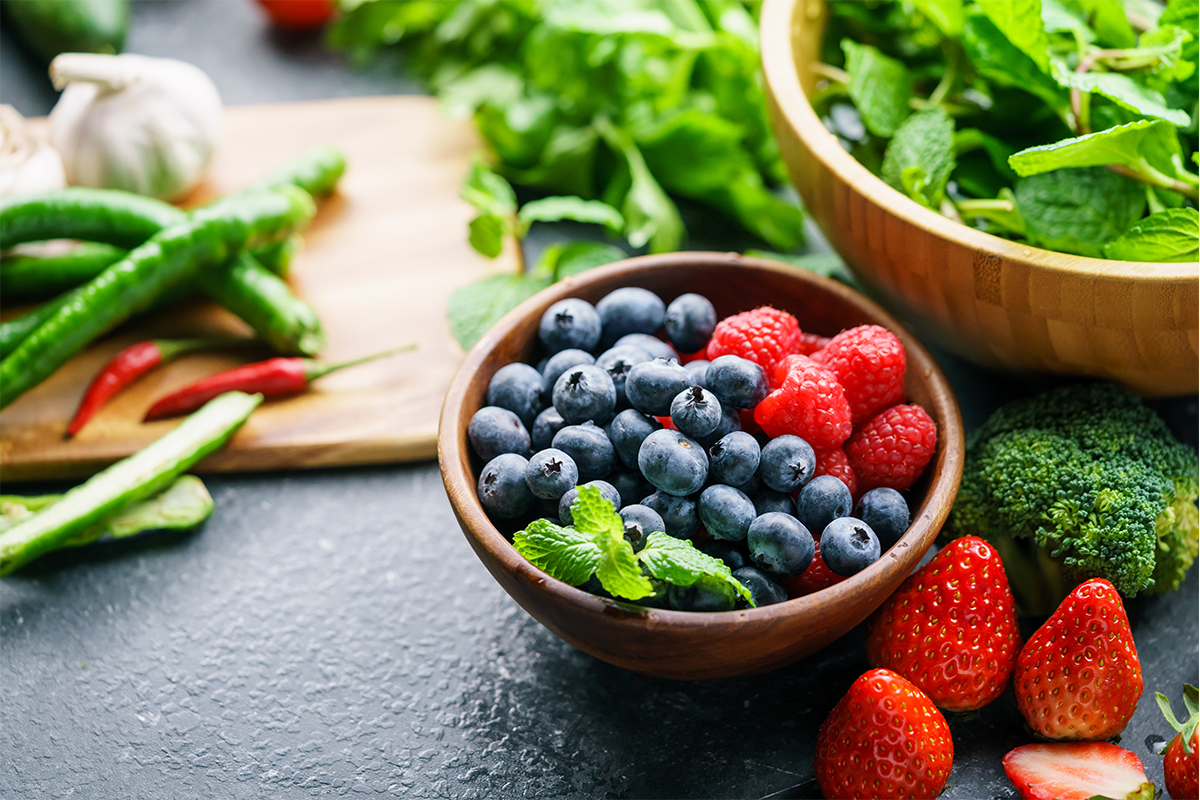How many fruits and vegetables do you eat a day? Experts recommend 10 servings (several cups) of both, which sounds like a lot — especially if you’re just starting to eat healthier.
But eating more produce doesn’t have to be hard, says Melissa Perry, registered dietitian-nutritionist at BlueCross BlueShield of Tennessee.
“There are a lot of simple, tasty ways to sneak extra servings of fruits or vegetables into your meals so the change feels manageable,” says Perry. “You don’t have to overhaul your diet or become a vegetarian to make a real difference in your health.”
Here are 15 tricks to sneak more fruits and veggies into your meals
Add spinach or zucchini to your smoothie.
Paired with fruit (fresh or frozen) you won’t taste the spinach or zucchini, but you’ll get a healthy dose of vitamin K, which is important for maintaining bone health.
Add mixed vegetables to soups.
Keep a bag of mixed veggies in the freezer. In seconds, you can add an extra serving to soups and stews, and you’ll cut your prep time in half!
Replace sandwich bread with lettuce.
Use a few leaves of iceberg, romaine or butter lettuce in place of your bread, bun or tortilla. If you can’t give up the bread, add at least one vegetable to your sandwich (tomato, lettuce, sliced cucumber, etc.).
Add fruit or celery to mayo-based salads.
Add chopped grapes or apples to chicken salad for extra fiber, or add potassium-rich celery to tuna salad for a little crunch.
Add one vegetable to every egg dish.
Saute onion and garlic with mushrooms (high in immune-boosting vitamin D) or leafy greens (high in fiber, low in calories) and add that to scrambled eggs, an omelet or a frittata.
Replace noodles with zucchini noodles or spaghetti squash.
Zucchini is rich in vision-boosting vitamin A, and spaghetti squash is high in manganese, which aids metabolism.
Add fruit to breakfast and dessert.
Throw berries or sliced bananas onto cereal, oatmeal or yogurt. Berries are high in vitamin C, which keeps skin healthy, and bananas are rich in energy-generating folate.
Mix and match fruits and proteins.
Make a filling, energizing snack by combining fruit and protein, such as cottage cheese and peaches, apples and peanut butter or a tangerine and a handful of nuts.
Add broccoli to mac and cheese.
Add chopped or whole broccoli florets to mac and cheese for a quick boost of antioxidants.
Grate extra veggies into sauces or meatloaf.
Grating onion, garlic, shallots or carrots into sauces is an easy way to boost nutrition and flavor.
Allium 101: A guide to onions, garlic, leeks, chives & more
Dip veggies in veggies!
Carrot and celery sticks can be dipped in hummus or guacamole. Chickpeas may help lower cholesterol, and avocados are full of healthy, monounsaturated fat.
Sneak an extra veggie into every salad.
Grate carrots into ginger salad dressing, or mix a small amount of shaved, raw cabbage into your salad. Carrots and cabbage are both rich in vitamin K, which helps with wound healing.
Complete guide to root vegetables
Replace half of the meat in chili with beans.
Legumes are packed with fiber, vitamins and minerals. If you don’t like beans in chili, try diced, roasted sweet potatoes or carrots.
Make veggie-topped pizza at home.
Buy dough at the grocery store, make or buy a quick tomato sauce and then add your favorite veggies as toppings — with or without meat.
Blend bananas for a sweet treat.
Make a healthy ice-cream-style treat by blending up frozen bananas. You can add heart-healthy cocoa powder for a chocolatey taste, and top with berries or nuts for a protein boost.
Get more information about specific health terms, topics and conditions to better manage your health on bcbst.com. BlueCross BlueShield of Tennessee members can access wellness-related discounts on fitness products, gym memberships, healthy eating and more through Blue365®. BCBST members can also find tools and resources to help improve health and well-being by logging into BlueAccess and going to the Managing Your Health tab.


